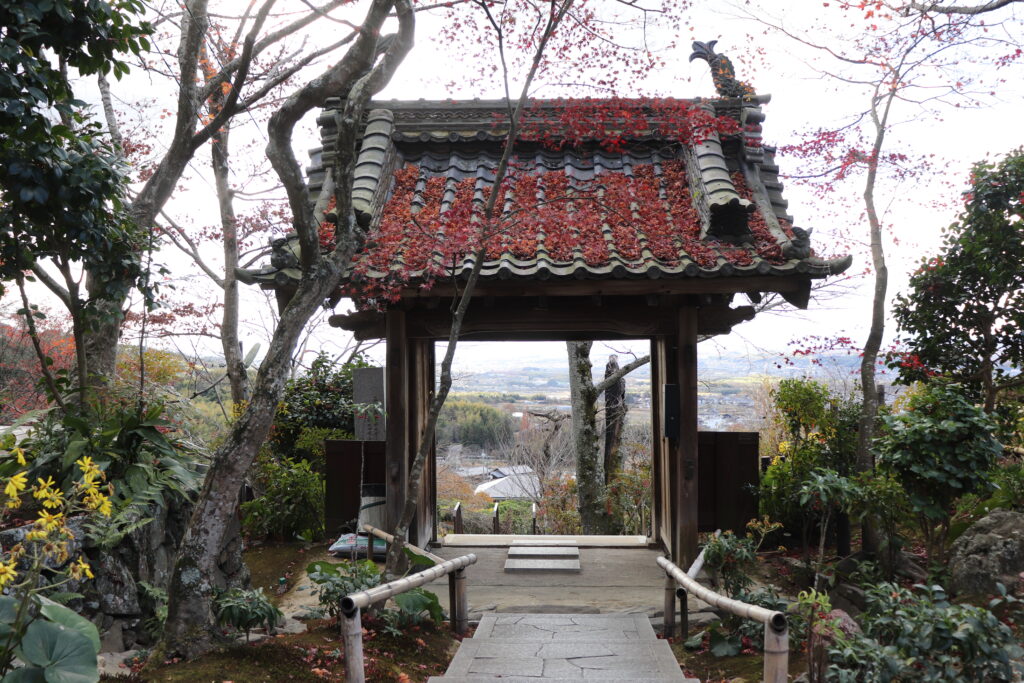This scenic section of the Yamashiro Kodo can easily be done in less than half a day, and makes for a great stop-off if travelling between Kyoto and Nara by train. This particular part of the route is situated in Ide Town, a small and rural jurisdiction of southern Kyoto Prefecture.
Inspiration
Hiking and History; Walking the Yamashiro Kodo along the Kyoto-Nara Line
The Yamashiro Kodo is a 25 km walking route that extends through the three southern Kyoto Prefecture cities of Joyo, Ide, and Kizugawa. The JR Nara Line and Kizugawa River run almost in parallel to this small path that gently winds along the mountains of Minamiyamashiro, and views of the Japanese countryside can be admired all along the route. The Yamashiro Kodo is also notable for all the sights you can see if you venture out a bit. The route passes through plum groves and tea fields, and beside waters where fireflies dance, as well as through locations sure to pique your curiosity about the local Japanese history and culture: historical sites with hidden secrets, towns that saw uprisings long ago, and those that still use ancient roads.
While hiking the full 25km route is a big undertaking, it is possible to hop on and off along the train line between Kyoto and Nara, and walk just as much as you’d like, such as the recommended 5km between Yamashiro-Taga and Tamamizu stations described here.
Ancient shrines and seasonal surprises
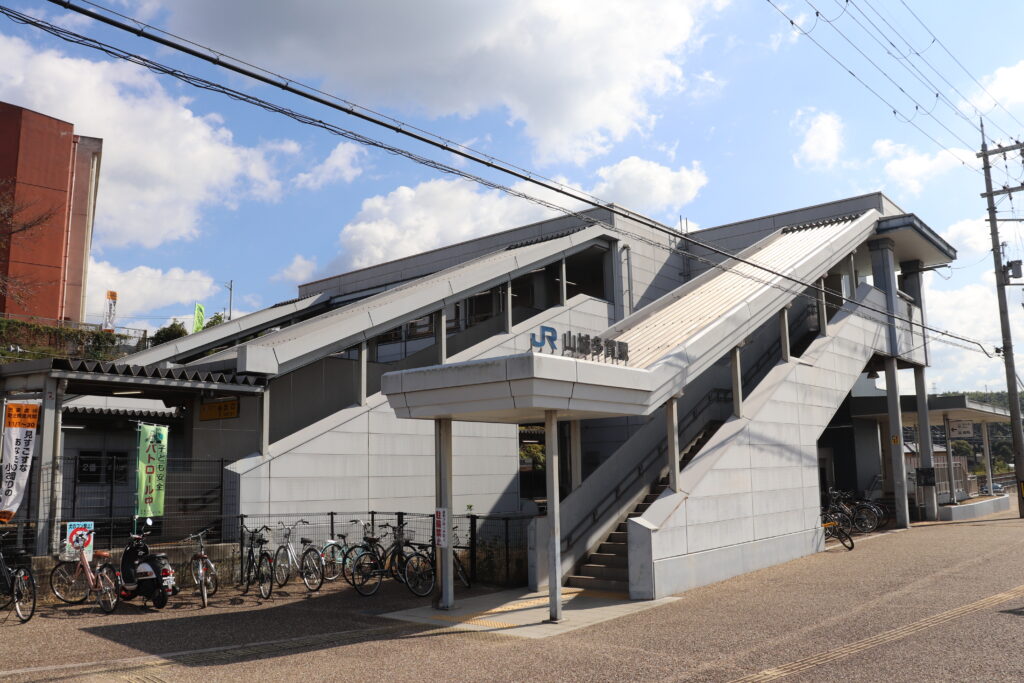
The hike starts at Yamashiro-Taga Station – head east out of the station and meander through the quiet backstreets, taking in the peaceful local village atmosphere of the area. After walking for 10 minutes or so along the countryside lanes you will arrive at the first stop of the day, Taka Shrine (高神社).
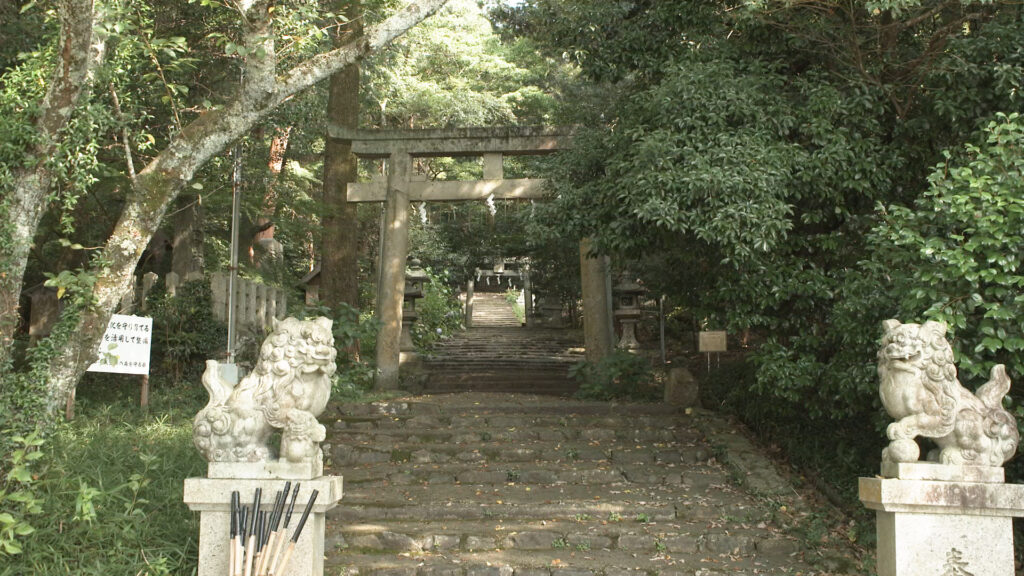
A long set of stone steps lead you up through the rich greenery of the forest, soon bringing you out at the shrine. Taka Shrine was founded in 711 and the main building, dating back to 1604, is designated as a Kyoto Prefectural Cultural Property. The shrine is significant as it was the first place on record in Japan where ‘sarugaku’ – an old form of theatrical performance from the Kamakura period (1185-1333) which pre-dates the more famous Noh plays – was performed, according to the shrine records of the same period.
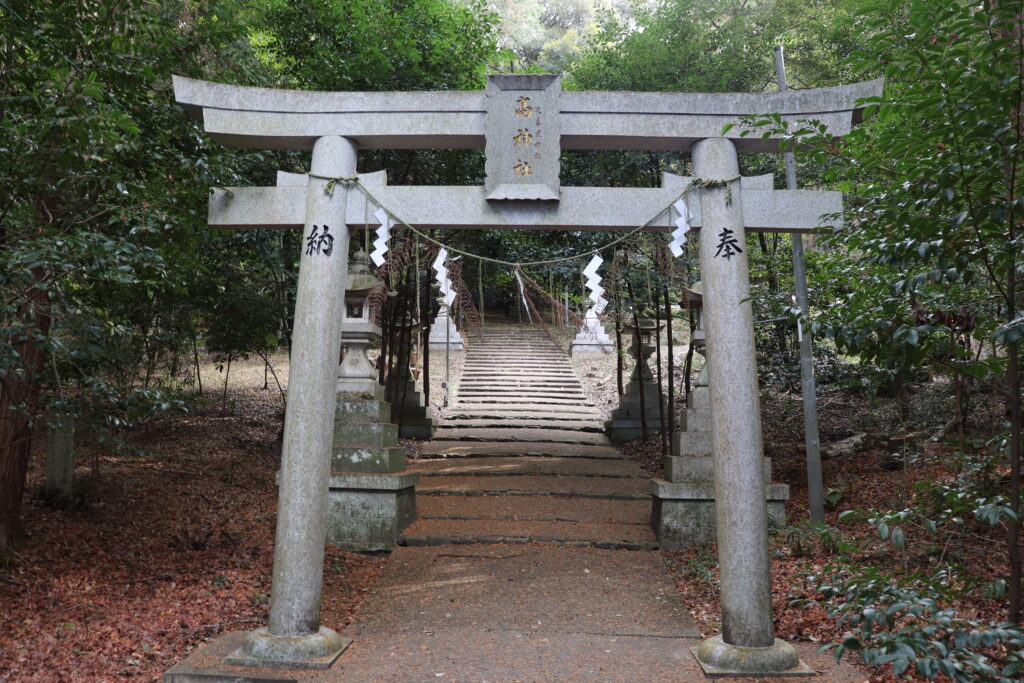
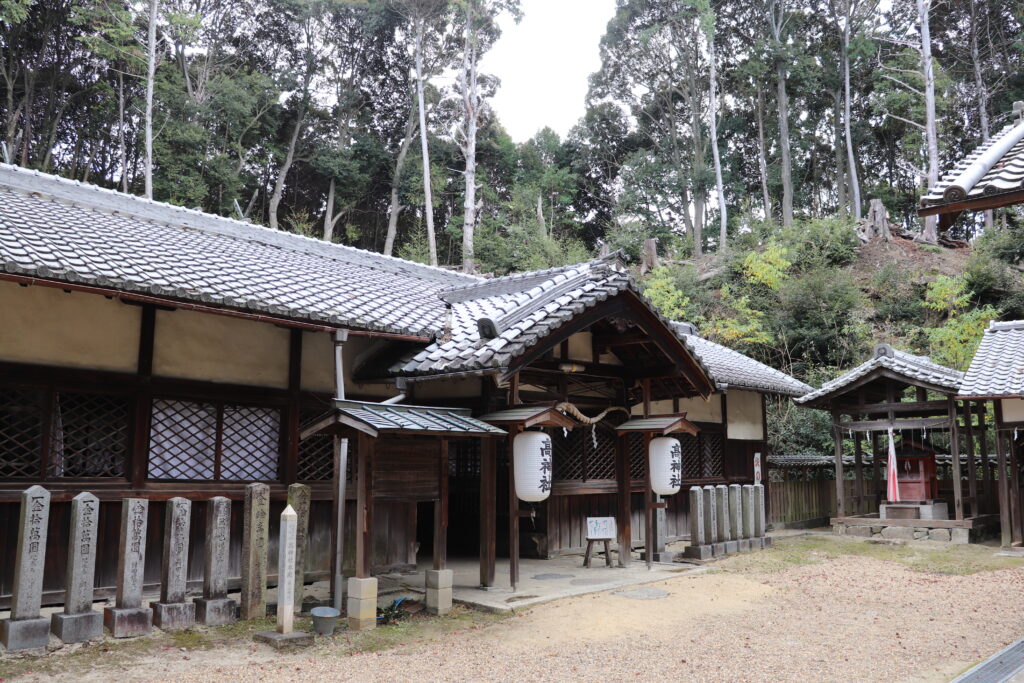
Next to entrance of the shrine you can also find Tanigawa Hotaru Park, which is a popular spot for observing fireflies (hotaru) as they flit around on balmy summer evenings around the beginning of rainy season (usually from mid to late June). Be sure to visit if you’re in the area at the time!
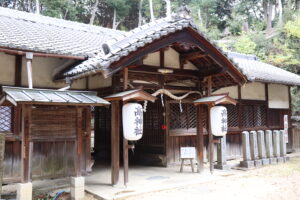
Taka Shrine
The Sacred Forest of Taka-Jinja Shrine has been selected as one of the 100 best scenic spots in Kyoto. Behind it, Taka-Jinja Shrine stands quietly. The main hall of the shrine was built in the Momoyam …
Countryside ways
From the firefly park the Yamashiro Kodo road swings southwest and then back eastwards through quiet neighbourhoods where locals go about their daily lives. The road then branches up a narrow lane into the hills (hint: to avoid getting lost keep an eye out for the special green and yellow mountain marks painted on the road) and it becomes a bit rougher underfoot. After a short but steady climb passing fields and forest you will emerge at an asphalt road; there is another marking on the road here, so be sure to follow the arrow pointing right.
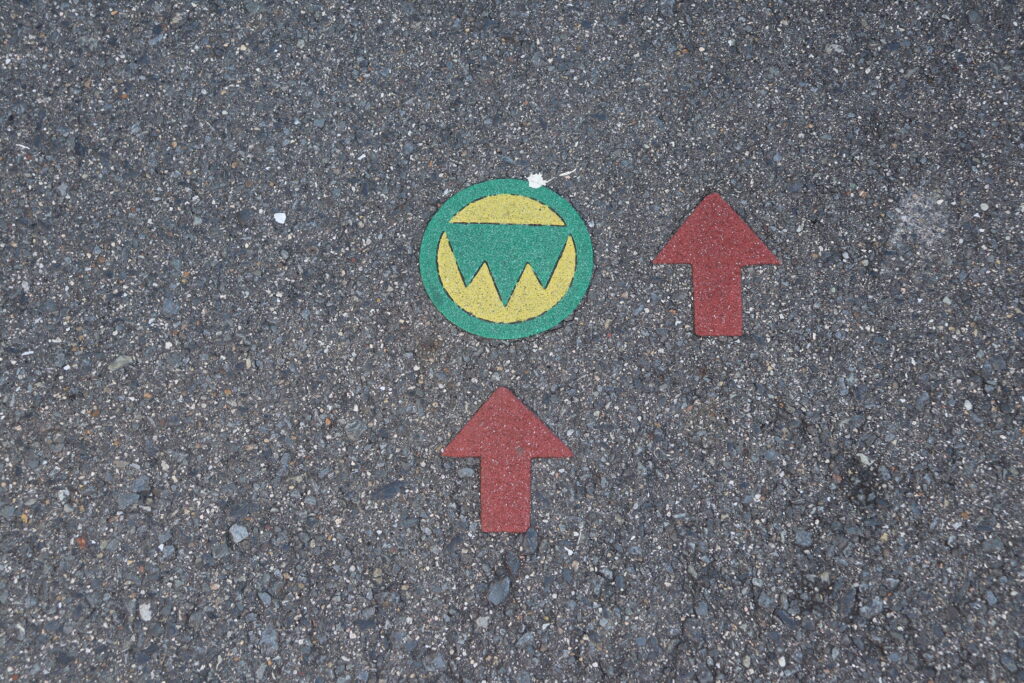
The road skirts gently along the mountainside, soon cutting through an impressive bamboo forest where you can admire the fine form and sounds of the bamboo as it sways in the breeze. Unlike at the popular bamboo groves in Arashiyama, here you can enjoy the unique views and peaceful tranquillity without any of the crowds.
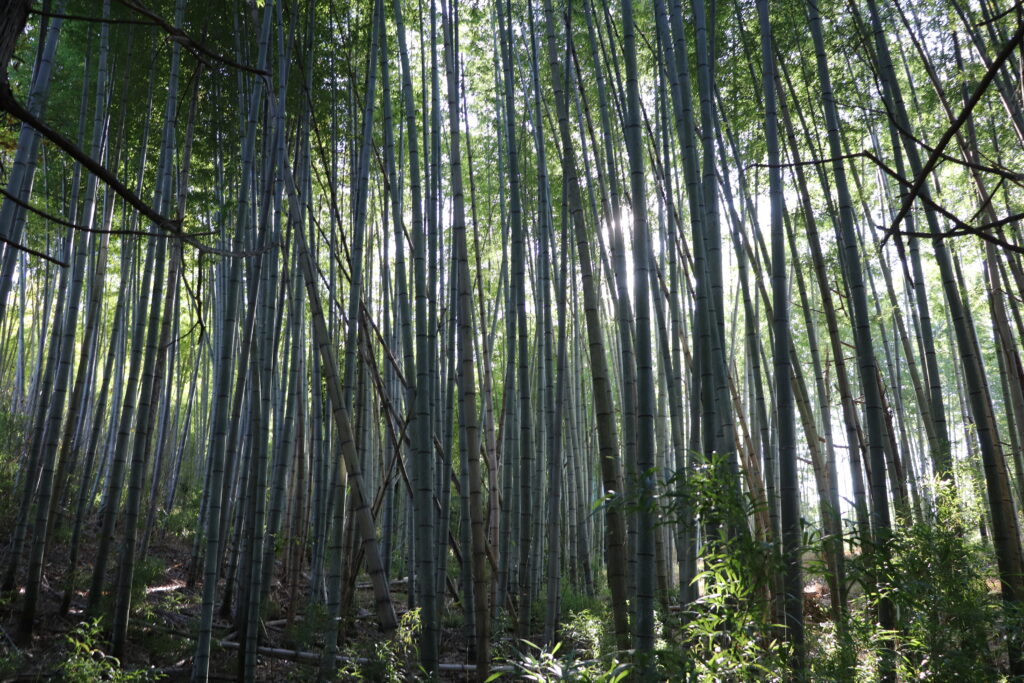
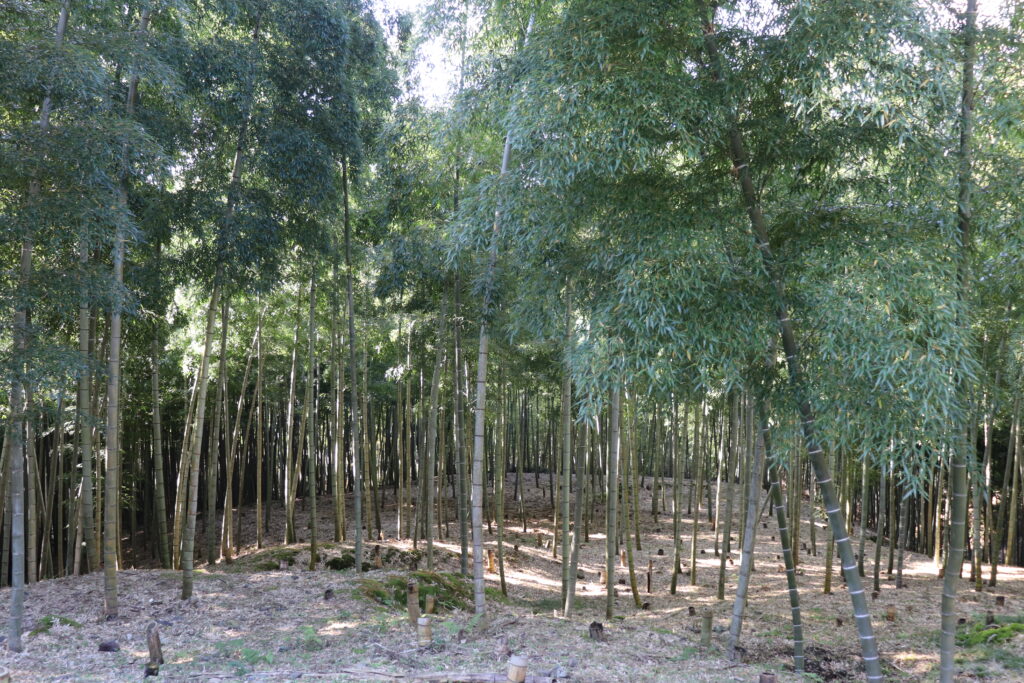
Beyond the bamboo forest the road then cuts through an extensive cedar wood, immersing you deep within the mountain’s natural surroundings. The road soon emerges from the forest (take the first left) and the views start to open out, with the sprawling Yamashiro Basin and distant Ikoma Mountain Range visible over to the west.
Historical sights
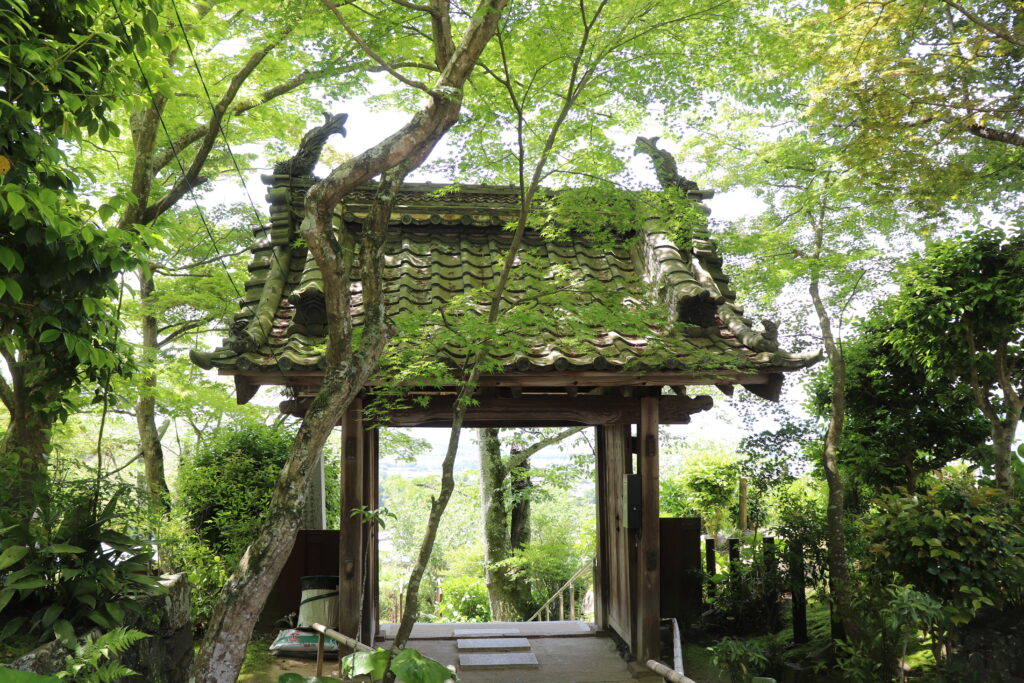
Continue ambling along the idyllic backstreets towards the entrance of Jizo Zen-in Temple (地蔵禅院), which is reached by climbing a paved path with stone steps and passing beneath a stone torii gate. The temple sits on a hillside and so offers expansive vistas of the plains below – listed as one of Kyoto’s top 100 views.
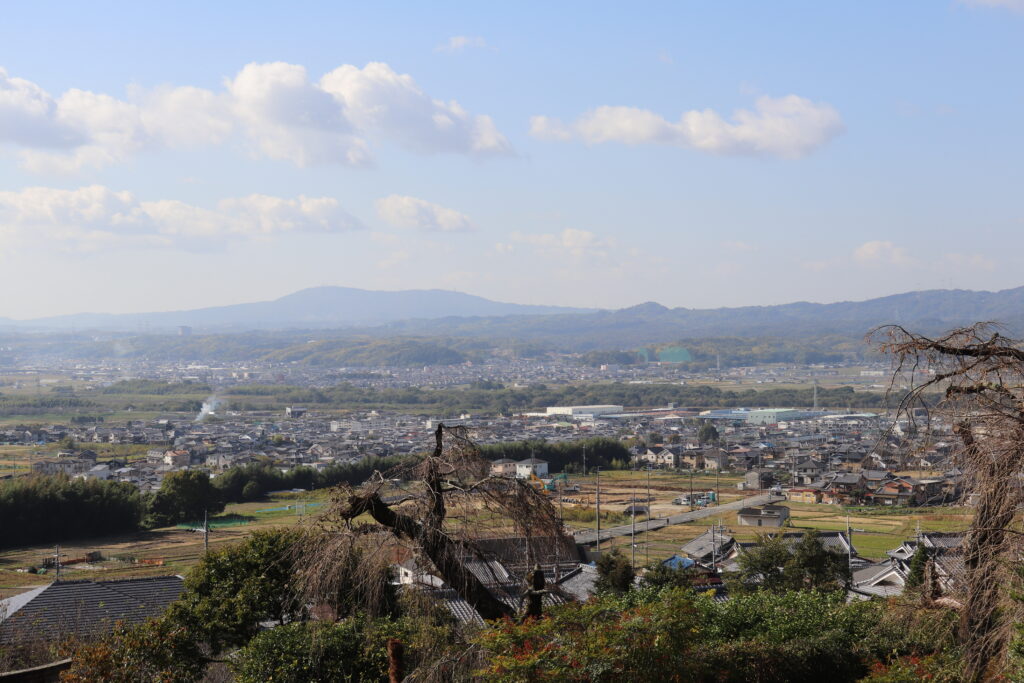
During the spring it is a popular place to come to see the amazing pink blooms of the weeping cherry trees, some of which are believed to be almost 300 years old.
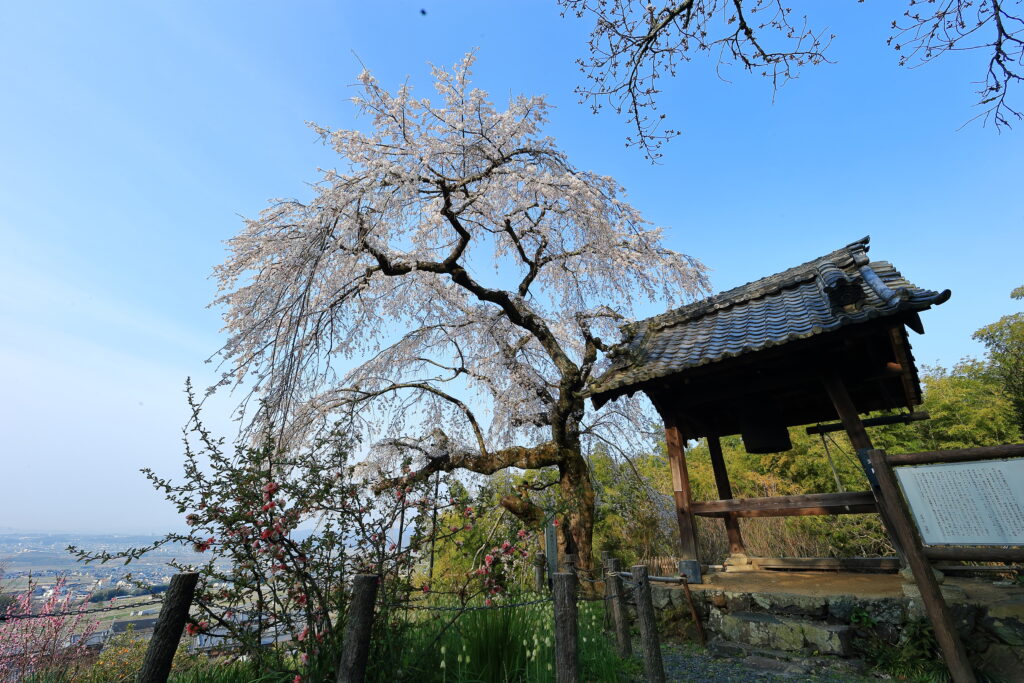
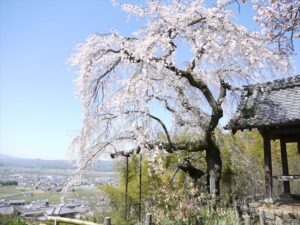
Jizozen-in Temple
Standing on a hill and to the south of Tamatsuoka Shrine, Jizozen-in Temple offers a sweeping view over the plains of the town of Ide. The glorious clouds of weeping cherry blossoms that bloom here ar …
Carrying on further up the path and at the top of the last flight of stone steps, a bright red torii gate signifies the entrance to Tamatsuoka Shrine (玉津岡神社).
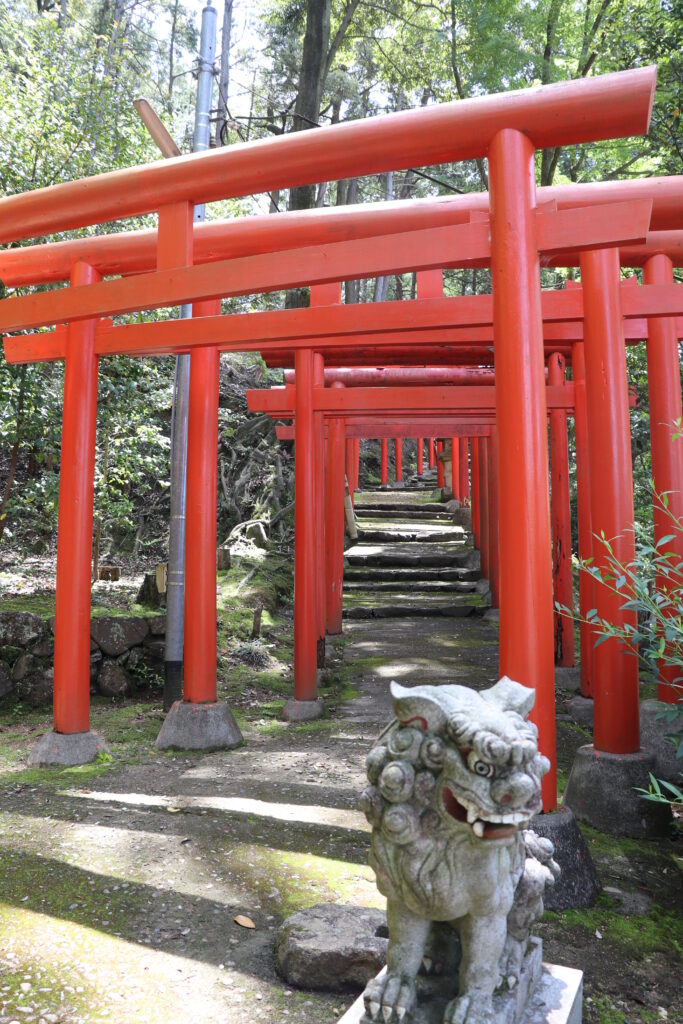
This beautiful woodland shrine complex is home to a number of interesting deities and also offers magnificent mountainside views, while boasting a quiet and mystical atmosphere to boot. It is even home to a winding path of red torii gates like the famous one at Fushimi-Inari Shrine in Kyoto, but again with none of the crowds!

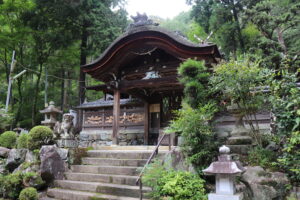
Tamatsuoka Shrine
This shrine was reportedly built as a clan temple by Tachibana no Moroe in 731. The precinct covered with overgrown trees is filled with cool air even on midsummer days, which creates a dark green sh …
Returning back down the paved path you will pass an inconspicuous rocky turret, said to be the grave of Ono-no-Komachi. She was a legendary waka poet (possibly living between 825-900), famed for her great beauty. She wrote mostly about melancholic love and anxiety, but very little is known of her life. Many stories circulate about Komachi, but it is said locally that in her later years she lived at nearby Ide-ji Temple and wandered the banks of the Tamagawa River, and so perhaps this is the spot where she was laid to rest.
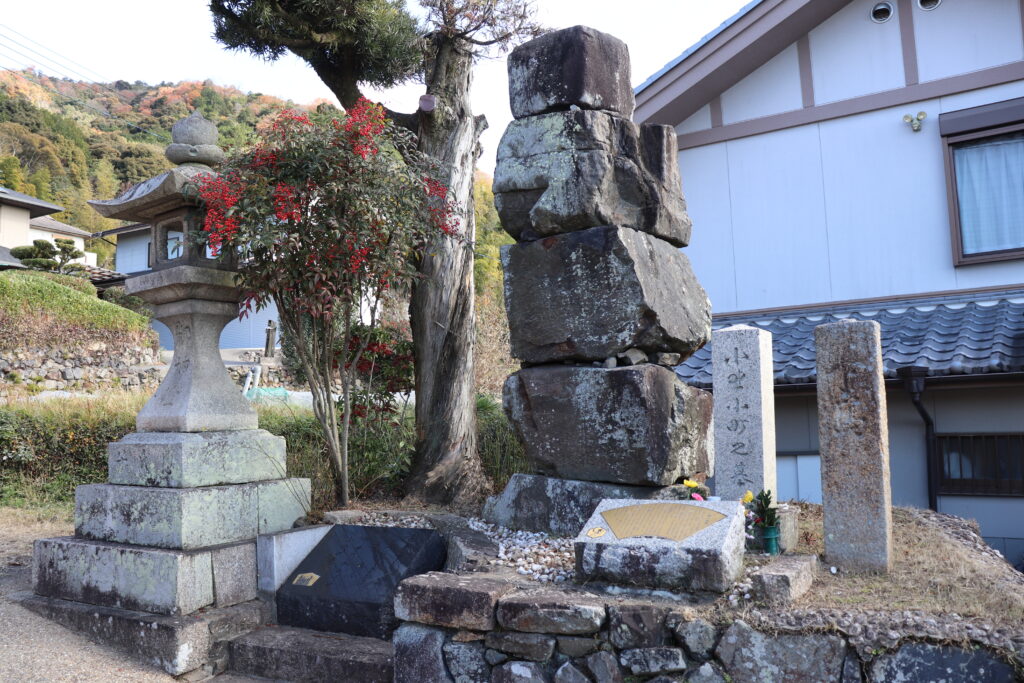
Carry on a little further and cross the Wazuka-Ide road to arrive down among fields and farmland, where you will soon spot the Ide Machizukuri Center Tsubakizaka*. This attractive building in the style of an old Japanese farmhouse functions as a community center and plays home to various events and exhibitions throughout the year – it is a great place to rest or perhaps mingle with the locals.
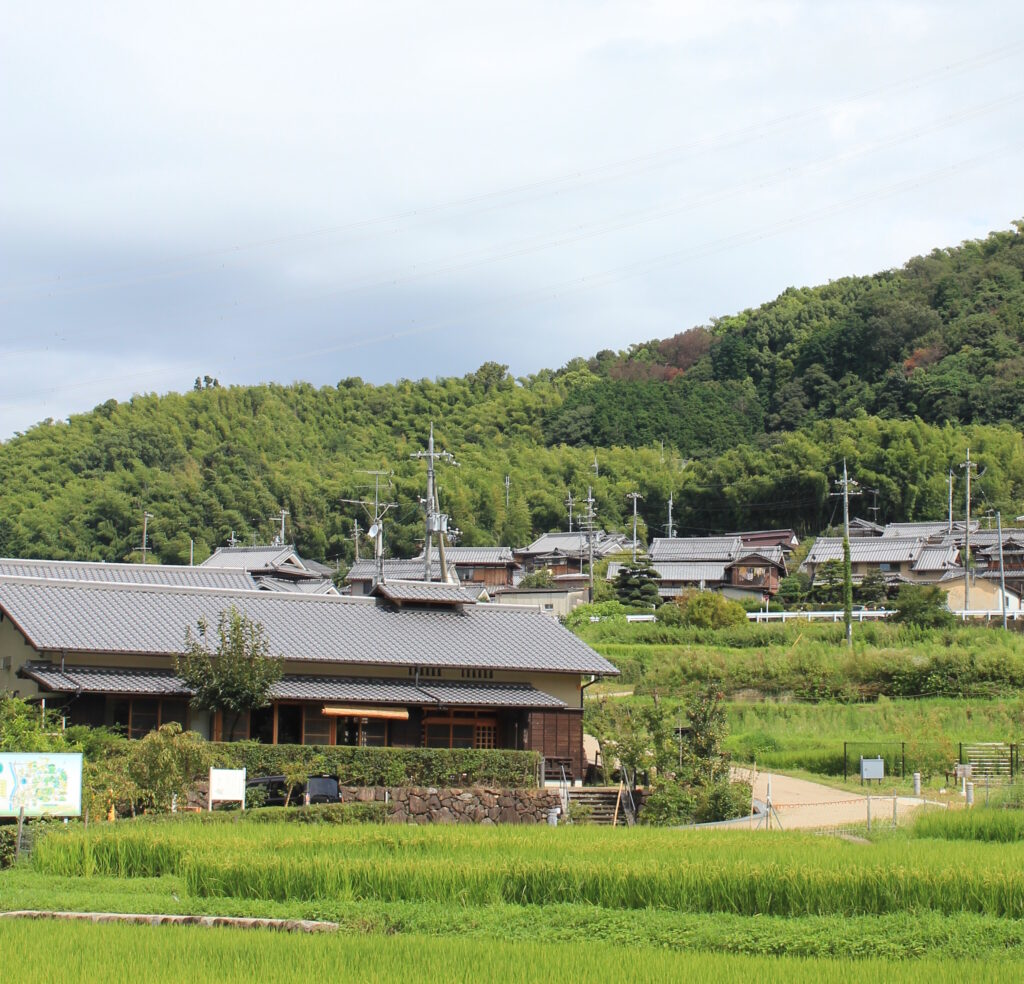
*Currently closed, but due to re-open soon.
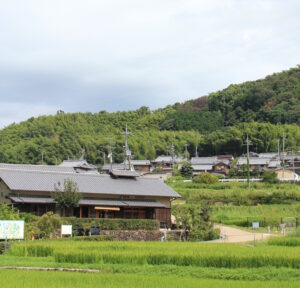
Ide Machizukuri Center Tsubakizaka
This is a place for relaxation and refreshment along Yamashiro Kodo. Commonly known as “Tsubaki-zaka,” this exchange hub of Ide-cho has a porch and a sunken fireplace, and is a space where you can spe …
Down by the river
From the community center it is then a gentle 15 minute walk down towards the station along the banks of the Tamagawa River, passing under the boughs of cherry trees and through peaceful riverside neighbourhoods. The Tamagawa was in fact selected as one the ‘Heisei Era’s Famous 100 Springs’ and has appeared in many old stories and poems from yesteryear.
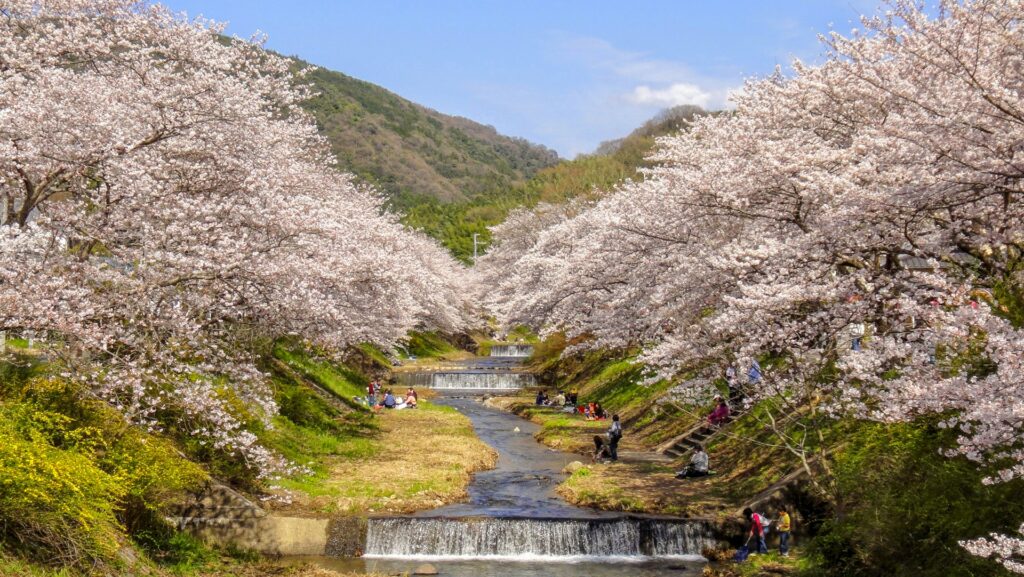
During the springtime (late March-early April) the riverside paths become a popular cherry blossom-viewing spot; for a length of about 1500m the banks of the Tamagawa are flanked with around 500 Yoshino cherry trees, and at the Tamagawa Tsutsumi cherry blossom spot (about 5 minutes’ walk from Tamamizu Station) the blossoms are lit-up by lanterns in the evening while children (and adults!) can enjoy jumping across stepping stones set in the river.
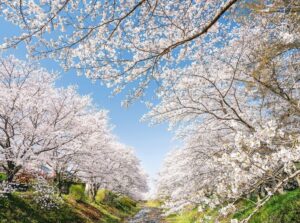
Cherry Blossoms Along the Tamagawa River
The Tamagawa River, which was selected as one of the “Heisei Era’s Famous 100 Springs,” has appeared in many poems and stories of old. About 500 Yoshino cherry trees bloom on both banks for 1,500m a …
If you are feeling peckish after your walk then be sure to pop into Tanaka-ya (たなか家), an udon shop popular with locals and visitors alike. It is a great place to stop for lunch, and serves up delicious and hearty udon noodles along with local vegetables and freshly-made tempura.
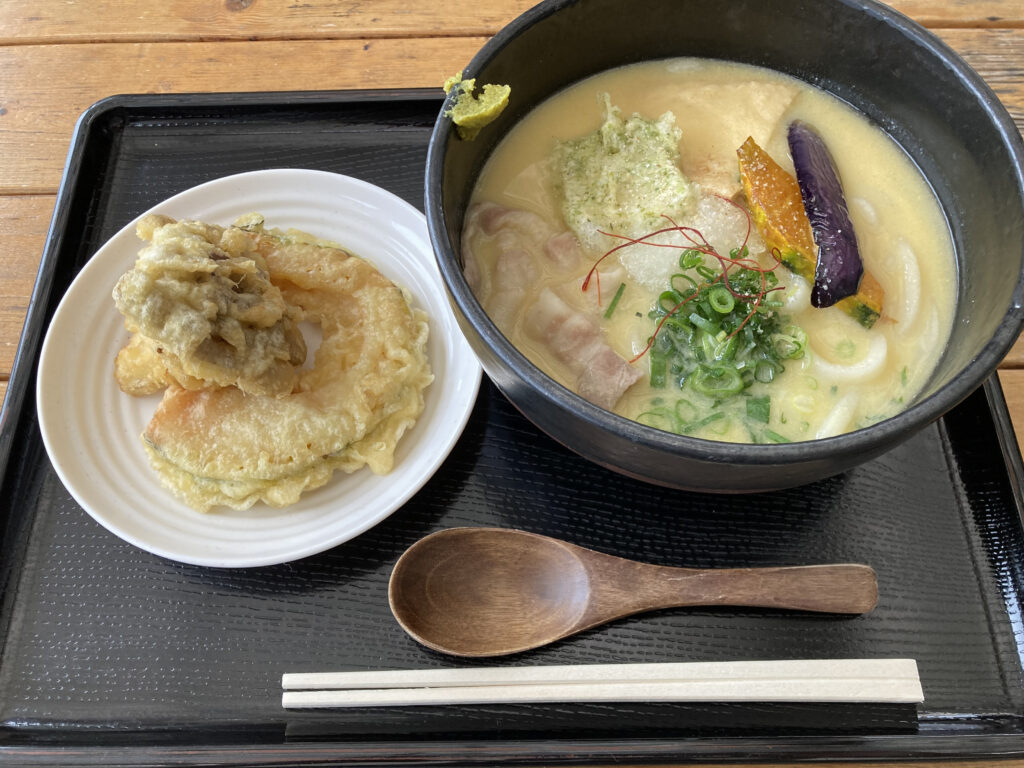
The shop is a 10 minute walk from Tamamizu Station and is open daily (except on Sundays and some Saturdays) from 11am until 2pm.

Tanaka-ya Udon: Ide-cho Main Shop
While this is a casual udon restaurant that runs on a self-service basis, the amazing quality of its dishes is evident as soon as you take a bite. The chewy and springy noodles and the deep and flavor …
Essential information
There are regular signposts and markings along most of the Yamashiro Kodo, but the best way to navigate is by using the free multilingual Yamashiro Kodo App (山背古道探検アプリ) available here:
“Yamashiro Kodo” App on Google Play
PDF Map of the Yamashiro Kodo (Japanese)
It features an interactive map, a fun trail quiz and highlights interesting points along the route with plenty of English information.
While most of the route is along paved roads, a short part of the middle section climbs up a rough countryside lane, so comfortable walking shoes are recommended. There are few amenities along the way, so it’s best to stock up on snacks and drinks beforehand.
There are regular trains on the JR Nara Line between Yamashiro-Taga (only local trains stop here, change to/from the rapid train at Uji) and Kyoto Station (36 minutes; 510 yen), and likewise if coming from Nara (25 minutes; 330 yen). At the end of the walk there are rapid trains from Tamamizu Station to Kyoto (30 minutes; 510 yen) and Nara (20 minutes; 240 yen). From Kyoto and Nara there are direct connections to Osaka.
So if you’re looking to get off the beaten path and explore the nature and history of this fascinating region, be sure to take a hike along the Yamashiro Kodo, the ancient route between Kyoto and Nara!
